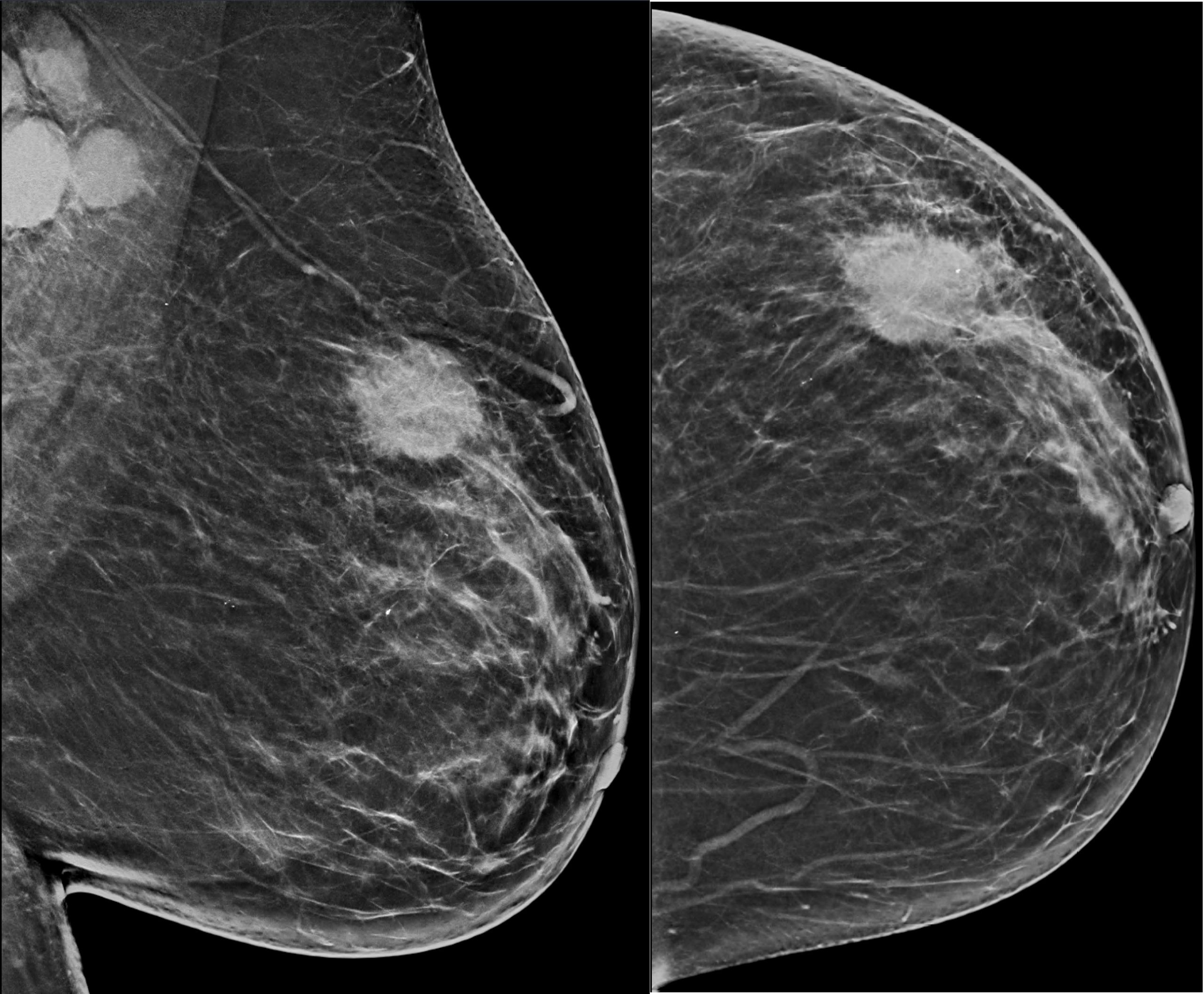Breast Cancer
Breast cancer is the most common cancer in the UK, and a leading cause of death in women. Each day in the UK, around 150 new cases are diagnosed, and 31 women die from breast cancer. The number of women newly diagnosed with breast cancer has risen continuously over the past 20 years, and now around 1 in 8 women can expect to be diagnosed with the disease during their lifetime.

The two main routes through which breast cancer is diagnosed are through the NHS Breast Screening Programme(NHSBSP), and through a symptomatic breast clinic when a patient with breast symptoms is referred by their GP for triple assessment under the two-week wait pathway. Breast imaging is central to both of these pathways, and successful delivery of high quality symptomatic and screening breast services is completely reliant on the presence of a well-staffed and highly-trained breast imaging workforce.
Breast Imaging
Traditionally, responsibility for performing mammography was the domain of radiographers, whereas breast radiologists were responsible for all subsequent steps in the diagnostic pathway, including image interpretation, ultrasound and tissue biopsy, as well as cancer localisation procedures before surgery.

Modern Advances in Breast Imaging
However, for a number of reasons, demand for breast imaging has dramatically increased, and technological innovations have led to increasingly complex imaging investigations which take longer to perform and to interpret. These developments have occurred at a faster rate than the clinical capacity of breast radiologists has increased. In response to this, the breast imaging community embraced the concept of skill-mix very early on, and there are now multiple areas where roles have been expanded and developed to increase flexibility and accommodate demand.

Many radiographers have progressed to the Advanced Practitioner tier and the Consultant Practitioner tier, and perform image interpretation, ultrasound examination and image-guided diagnostic procedures alongside their radiology colleagues. In addition, the successful piloting of the Assistant Practitioner role within the NHSBSP has resulted in the recruitment of a new tier of mammography support staff who are trained to undertake high-quality standard mammographic images under the supervision of a radiographer. Furthermore, the role of the breast clinician, a doctor with a non-radiology background who has undergone training in breast disease management, has been firmly established as part of the breast imaging workforce.
As a result, the modern breast imaging workforce is multidisciplinary and adaptable and currently consists of four tiers of radiography staff, breast radiologists and breast clinicians, all of whom play a key role in the detection and diagnosis of breast disease.

 In this section
In this section